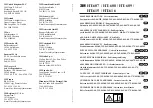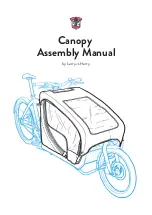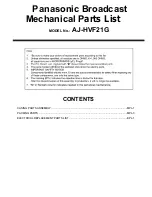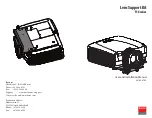
305_NEW CRUISER_21/02/18 5/8 Copyright © 2014 Peruzzo Italy - MADE IN ITALY
1. Pulire le parti della carrozzeria che verranno a con-
tatto con gli appoggi P in gomma del portaciclo,
13
.
2. Appoggiare il portaciclo sull’auto e agganciare le cin-
ghie F1 sul bordo superiore del portellone oppure
al bordo anteriore del cofano,
13
. Aggiustare l’al-
tezza del portaciclo tirando le cinghie fino a rag-
giungere il corretto posizionamento (dove previsto
usare l’adattatore I, vedi lista auto),
11 12 13
.
Provare ad aprire e chiudere lentamente il cofano/
portellone e fare attenzione che i ganci non dan-
neggino la carrozzeria. In tal caso usare l’adatta-
tore I.
3. Con auto provviste di barre longitudinali (railing),
preferire l’aggancio della cinghia F1 come da fig.
14
.
4. Per veicoli con spoiler, le cinghie superiori F1 non
devono essere a contatto con lo spoiler stesso
perchè potrebbero provocare danneggiamenti.
Procedere quindi al fissaggio corretto come mostra-
to in fig.
15
.
5. Non posare la parte inferiore del portaciclo
sulle parti orizzontali della carrozzeria o su
paraurti. Tenere il portabici in sospensione come
mostrato in fig.
16
.
6. Inserire i ganci G delle cinghie F2 (se in dotazio-
ne) ai lati di portellone o cofano utilizzando, dove
previsto, l’adattatore I (vedi lista auto). Tirare forte.
7. Agganciare le cinghie F3 nella parte inferiore del
portellone; se ciò non dovesse essere possibile,
fissarle alla parte inferiore del paraurti utilizzando,
dove previsto, l’adattatore I (vedi lista auto) e tirare
forte.
8. Se l’auto è provvista di gancio per traino, fissare la
cinghia F3 destra come da fig.
17
.
FISSAGGIO
DEL PORTACICLO
ATTENZIONE
I ganci di fissaggio G
11
, seppur provvisti della prote-
zione, possono ammaccare la carrozzeria dell’auto. Per
questa ragione, i ganci G sul portellone posterio-
re non devono essere a contatto con parti in vetro o
plastica; se ciò dovesse accadere, utilizzare l’adattato-
re I, se incluso, e seguire lo schema di fig.
11
12
. Nella
lista di adattabilità auto è specificata la posizione cor-
retta dell’adattatore I (nel caso in cui l’adattato-
re I non fosse incluso nella confezione, potete acqui-
starlo separatamente presso il punto vendita).
1. Clean the parts of the bodywork that will be in
contact with the rubber supports P of the bicy-
cle carrier,
13
.
2. Place the bicycle carrier on the car and hook the
straps F1 on the top edge of the door or the
front edge of the bonnet,
13
. Adjust the height
of the bicycle carrier by pulling the straps until
reaching the correct position (when provided for,
use the adapter I, see car list),
11
12
13
. Try
opening and closing bonnet/rear door slowly,
making sure the hooks do not damage the body-
work. In which case use the adapter I.
3. With cars equipped with railing, use the clasp of
strap F1 as shown in
14
.
4. For vehicles with spoiler, the upper straps F1 must
not be in contact with the spoiler because they
could cause damage. Therefore proceed with cor-
rect fixing as shown in
15
.
5. Do not place the bottom part of the bicycle
carrier on the horizontal parts of the bodywork
or on bumpers. Keep the bicycle carrier sus-
pended as shown in
16
.
6. Insert the claps G of straps F2 (if supplied) at
the sides of the door or bonnet using the adapt-
er I (when provided for) (see car list). Pull hard.
7. Hook the straps F3 in the bottom part of the
door; if this is not possible, fix them to the bottom
part of the bumper using the adapter I (when
provided for) (see car list) and pull hard.
8. If the car is equipped with a tow hook, fix the right
strap F3 as shown in
17
.
FIXING THE BICYCLE
CARRIER
IMPORTANT
Although provided with protection, the fixing
clasps G
11
can dent the car bodywork. Therefore the
clasp G on the rear door must not be in contact
with glass or plastic parts; in the event this occurs, use
adapter I, if included, and follow the layout of fig.
11
12
. The car adaptability list specifies the correct posi-
tion of the adapter I (if adapter I is not included in
the package, you can purchase one separately at the
sales outlet).
1. Limpiar las partes de la carrocería que entrarán en con-
tacto con los soportes P de caucho del portabici,
13
.
2. Apoyar el portabici sobre el coche y enganchar las
correas F1 en el borde superior de la puerta trasera o
bien en el borde anterior del maletero,
13
. Ajustar la
altura del portabici tirando de las correas hasta lograr
el posicionamiento correcto (donde previsto usar el
adaptador I, ver lista coches),
11
12
13
. Intentar
abrir y cerrar lentamente el capó/puerta trasera y poner
atención para que los ganchos no dañen la carrocería. Si
eso ocurriera, usar el adaptador I.
3. Con coches provistos de barras longitudinales (railing),
es mejor el enganche de la correa F1 según explica
la fig.
14
.
4. Para vehículos con spoiler, las correas superiores F1 no
tienen que estar en contacto con el spoiler mismo pues-
to que podrían provocar daños. Proceder entonces a la
sujeción correcta según se explica en la fig.
15
.
5. No apoyar la parte inferior del portabici sobre las
partes horizontales de la carrocería o sobre el para-
choques. Mantener el portabici en suspensión según
se explica en la fig.
16
.
6. Introducir los ganchos G de las correas F2 (si están
en dotación) en los lados de la puerta posterior o del
maletero utilizando, donde previsto, el adaptador I (ver
lista coches). Tirar fuerte.
7. Enganchar las correas F3 en la parte inferior de la puer-
ta posterior; si no fuese posible hacerlo, hay que sujetar-
las a la parte inferior del parachoques utilizando, donde
previsto, el adaptador I (ver lista coches) y tirar fuerte.
8. Si el coche tiene gancho para remolque, sujetar la
correa F3 derecha según se explica en la fig.
17
.
SUJECIÓN DEL PORTABICI
ATENCIÓN
Los ganchos de sujeción G
11
, aunque estén dotados
de su protección, pueden abollar la carrocería del
coche. Por esta razón, los ganchos G en la puerta
posterior no tienen que estar en contacto con partes
de vidrio o de plástico; si eso ocurriese, utilizar el adap-
tador I, si está incluido, y seguir el esquema de fig.
11
12
. En la lista de adaptabilidad coche está especificada
la posición correcta del adaptador I (en el caso en
que el adaptador I no estuviese incluido en la confec-
ción, puedes adquirirlo por separado en el mismo
punto venta).
I
GB
E
F3
OK
17
16


























